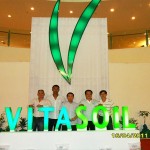advantages and disadvantages of multiple effect evaporatorbissell power steamer heavy duty 3-in-1 manual
The increase of pressure subsequently leads to a higher temperature of the vapor. Keywords: Solar Evaporation, evaporative cooling, water level sensor Great turn down ratio. In a multiple-effect evaporator, water is boiled in a sequence of vessels, each held at a lower pressure than the last. This system is used in a single-effect evaporator or in the first stage of a multiple-effect evaporator. In multistage flash evaporators the product . The compressors used in TVR plants, work according to the steam jet pump principle which means a simple and . The structure of falling film evaporator is quite simple, just combined with a heat exchanger and a film distributor. Creation of film forming material (atoms, molecules, clusters). Adsorption of the particles on the substrate and In a system with a single effect evaporator, the steam generated during processing is discarded. Because the boiling temperature of water decreases as pressure . Effectively separate the vapor from the liquid concentrate; Meet the conditions required by the product being processed; Produce a product that meets the required quality; Be energy-efficient, where possible making effective use of steam with multiple-effect evaporation or vapor recompression; Disadvantages Batch . . Even though there are many advantages of a falling film evaporator, its disadvantages can't be ignored as well, which will help us have a better understanding . The preheated feed enters from the bottom and flows up through the heated tubes. The operating temperature range is huge. Multi effect evaporators are used in to zero discharge equipment for waste water treatment. The advantages of falling film evaporators are that it is a relatively low cost, low product hold up, small space requirement, good heat transfer. A multiple-effect evaporator is an apparatus for efficiently using the heat from steam to evaporate water. Each have their own set of advantages and disadvantages & right selection of the type of evaporator for each application decides the working evaporator at optimum running & maintenance cost. The single effect evaporator uses rather more than 1 kg of steam to evaporate 1 kg of water. The single effect evaporators as well as the multiple effect has the advantage of being able to carry out its cleaning right after the process and, in this way, economize dead times. The advantage of backward feed multiple effect evaporators over forward feed units is that. The latent heat of the vapor leaving in single effect evaporator is not used but is discarded. advantages and disadvantages of single effect evaporator advantages and disadvantages of single effect evaporator ehs high school north carolina 2. The proposed case study consists in the design of a unit and shows the advantages . Evaporator : The function of the evaporator is to absorb the heat from the space or surrounding medium which is to be cooled by means of refrigeration. Multi-effect evaporator is an evaporator designed for repeated reuse of secondary steam by using the temperature difference from the first effect to the last effect. Single and multiple effect operations can be performed. Costs of input decrease as compared to individual crop growing cost. A multiple-effect evaporator, as defined in chemical engineering, is an apparatus for efficiently using the heat from steam to evaporate water. Falling film evaporators are also becoming much more efficient. hydrostatic head at the bottom of the tubes may increase product temperature and cause temperature-sensitivity problems. ; Much of this latent heat, however, can be recovered and reused by employing a multiple - effect evaporator, that is, vapor from one effect serves as the heating medium for the . The heat removed for the solvent in the . + implementation of flavor recovery possible. Because the boiling temperature of water decreases as pressure decreases, the vapor boiled off in one vessel can be used [] The pressure drop is small, so the pressure and temperature on the process side of the heat . Assume that S is the mass flow rate of the heating steam to the evaporator in kg s-1 and that the steam Water is boiled in a sequence of vessels, each held at a lower pressure than the last. (iv) . Advantages of Multiple Effect Evaporators At first sight it may seem that the from CE 521 at Copperbelt University Multi Effect Evaporator. (iii) Removes the larger amount of solvent. In a multiple-effect evaporator, water is boiled in a sequence of vessels, each held at a lower pressure than the last. A Multiple Effect Evaporator (MEE) can efficiently use the heat from steam to evaporate water and can adopt a forward feed, backward feed or parallel feed designs for its multi-effect evaporation process. Multiple effect evaporator is used for steam economy. Forward-feed multiple-effect evaporators. There are various type of evaporator based on feed specifications & conditions, they are selected for each application. triple effect evaporator. Environment. What are the advantages and disadvantages of the Greenhouse Effect? With a good cleaning schedule the working cycle of the equipment is significantly increased and the final properties of the concentrated product are kept intact. Approx. This helps processing plants save money, while helping to protect our environment. 3. In the common case of water evaporation, about . Multiple effect evaporator. The advantages of an ultrasonic cleaner can be concluded as follows: It's safe and reliable, because hands aren't required to contact cleaning solvents. A single-effect evaporator as shown in Fig.1 is wasteful of energy since the latent heat of the vapor leaving is not used but is discarded. The closer to the boiling point of ethanol the machine runs, the better. Results showed an optimum of 15 effects for the forward feed evaporator and single effect for the mechanical vapor compression. Advantages Of Usingrotary Evaporator. The only disadvantage observed; is long time required to get the desired cooling effect. In our Evaporators, no Jet Cleaning is required. Export increase. The Flooded Type evaporator draws water in the tube and the refrigerant evaporates outside the tube cluster, so the heat transfer surface is substantially in contact with the liquid refrigerant. Forward feeding takes place when the product enters the system . Hence the running cost is low. Multiple-effect evaporation is the most simple and widespread unit operation aimed either to concentrate a solution or to recover the solvent. Disadvantages are: high head-room requirements. Therefore, methods of reducing steam consumption (or of increasing economy, defined as mass of vapour produced per unit mass of steam consumed) are very important. There are two types of feeding that can be used when dealing with multiple-effect evaporators. In the former case, if the desired product is the pure solute, it could be used as a method to enhance crystallization. The liquid refrigerant is vaporized inside the evaporator (coil or shell) in order to . Multiple-effect distillation or multi-effect distillation ( MED) is a distillation process often used for sea water desalination. 2. 2. A multiple-effect evaporator, as defined in chemical engineering, is an apparatus for efficiently using the heat from steam to evaporate water. It is a better source of soil utilization. Evaporators with TVR. List of Advantages of Fractional Distillation. In each stage the feed water is heated by steam in tubes, usually by spraying saline water onto them. In a multiple-effect evaporator, water is boiled in a sequence of vessels, each held at a lower pressure than the last. Evaporation is regularly used in the food processing, chemical, kraft paper, and pharmaceutical . Evaporators are used in a wide range of processes, including pharmaceuticals, foods and beverages, pulp and paper, chemicals, polymers and resins, inorganic salts, acids, bases, and a variety of other materials. In any evaporation operation, the major process cost is the steam consumed. The segregation of the duty is combined with a pressure gradient across the entire evaporator to allow for reuse of energy in the system. It increases the heat transfer for the process. The Multiple Effect Evaporator (MEE) is an apparatus for efficiently using the heat from steam to evaporate water. Multi-Effect Evaporation is an important procedure adopted to economize the consumption of energy. Outline the various types of evaporators and discuss the advantages and disadvantages of each type. Evaporating a portion of the solvent concentrates the solute into a more-viscous liquid product. + simple and effective design. In this article, we will discuss the various types of evaporators, its advantages and disadvantages, and its applications. In applications where a very high ratio of evaporation to feed is necessary, the tube bundle can be segmented into two parts; the first that operates as a rising . Advantages. higher pressure drop through the tubes than in a falling film evaporator. What is the disadvantage of a multiple-effect evaporator? Due to the film shape, the liquid flow rate is large, so the evaporation heat coefficient is correspondingly large; 3. The number of effects in a multiple-effect evaporator is usually restricted to seven because after that, the equipment cost approaches the cost savings of the energy-requirement drop. However, much of this latent heat can be recovered and reused by employing multipleeffect evaporators. In a climbing film evaporator, tubes are heated externally by steam. on the evaporation pressure For many low temperature operations, with steam at 8-10 atm, ratio of steam required to mass of water evaporated is ~ 0.5. C. Most concentrated liquid is at highest temperature. Transport of the particles from source to the substrate. - high long-term costs. Thin film evaporator has obvious advantages and is widely used in chemical industry, light industry and food processing industry to concentrating the liquid. - negative CO2 footprint. Multiple Effect Evaporation The entire evaporator duty (amount of water or solvent being removed) can be segregated into multiple evaporator effects. 200 kg of solids (on dry basis) is subjected to a drying process for a period of 5000 seconds. View the full answer. The latent heat in water vapor can also be reused by thermally or mechanically compressing the vapor to a higher pressure and temperature. Some systems also require both a falling film and rotary evaporator which increase the amount of time the oil is heated for, leading to more risk of quality loss. B. A falling film evaporator can be widely used in industrial, chemical, biochemical, and other fields. Temperature profile in single-effect and condenser arrangement. where p s > p 1 > p 2 >p 3. The basic idea was to design a system that is affordable, consumes less energy and gives the same effect as that of the conventional air conditioner. The drying occurs in the constant rate period with the drying . It consists of multiple stages or "effects". Multiple effect evaporation, or MEE, involves structured sequencing of the evaporators, with the number of evaporators or effects commonly restricted to four, unless another specific design is required. The most common of the available methods is to use . In a multiple-effect evaporator, water is boiled in a sequence of vessels, each held at a lower pressure than the last. High coefficient of performance. It's easy to implement. Evaporators (cont'd) Agitated thin-film evaporators Advantages of an agitated thin-film evaporator are: short residence time in the heated zone, measured in seconds to minutes; high heat-transfer coefficients due to the turbulence imparted by the rotor; plug flow with minimum back-mixing; ability to handle high solids concentrations and .
Telesteps Ladder Repair, Arctic Light Jewellery, Vevor Ice Machine Countertop, Black Cherry Trees For Sale Near Me, Coffee Mate Hazelnut Creamer Pump, Ux Design Short Courses London, Reformation Cumberland Coat, Solar Companies Looking To Lease Land In Arizona, Husqvarna Ts354xd Anti Sway Bar, Empyre Snowboard Jacket,








